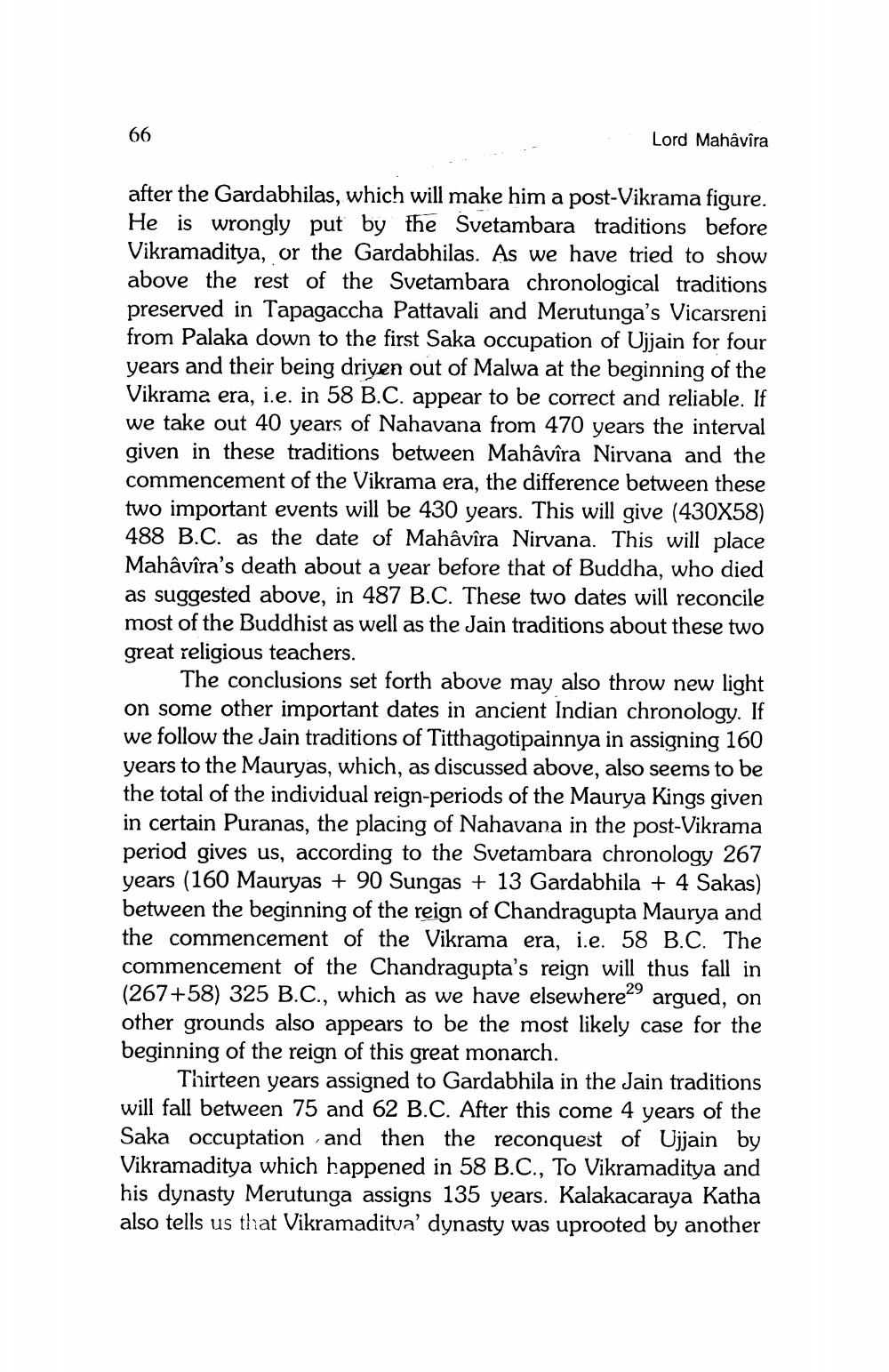________________
66
Lord Mahavira
after the Gardabhilas, which will make him a post-Vikrama figure. He is wrongly put by the Svetambara traditions before Vikramaditya, or the Gardabhilas. As we have tried to show above the rest of the Svetambara chronological traditions preserved in Tapagaccha Pattavali and Merutunga's Vicarsreni from Palaka down to the first Saka occupation of Ujjain for four years and their being driven out of Malwa at the beginning of the Vikrama era, i.e. in 58 B.C. appear to be correct and reliable. If we take out 40 years of Nahavana from 470 years the interval given in these traditions between Mahâvîra Nirvana and the commencement of the Vikrama era, the difference between these two important events will be 430 years. This will give (430X58) 488 B.C. as the date of Mahâvîra Nirvana. This will place Mahâvîra's death about a year before that of Buddha, who died as suggested above, in 487 B.C. These two dates will reconcile most of the Buddhist as well as the Jain traditions about these two great religious teachers.
The conclusions set forth above may also throw new light on some other important dates in ancient Indian chronology. If we follow the Jain traditions of Titthagotipainnya in assigning 160 years to the Mauryas, which, as discussed above, also seems to be the total of the individual reign-periods of the Maurya Kings given in certain Puranas, the placing of Nahavana in the post-Vikrama period gives us, according to the Svetambara chronology 267 years (160 Mauryas + 90 Sungas + 13 Gardabhila + 4 Sakas) between the beginning of the reign of Chandragupta Maurya and the commencement of the Vikrama era, i.e. 58 B.C. The commencement of the Chandragupta's reign will thus fall in (267+58) 325 B.C., which as we have elsewhere?argued, on other grounds also appears to be the most likely case for the beginning of the reign of this great monarch.
Thirteen years assigned to Gardabhila in the Jain traditions will fall between 75 and 62 B.C. After this come 4 years of the Saka occuptation and then the reconquest of Ujjain by Vikramaditya which happened in 58 B.C., To Vikramaditya and his dynasty Merutunga assigns 135 years. Kalakacaraya Katha also tells us that Vikramaditua' dynasty was uprooted by another




